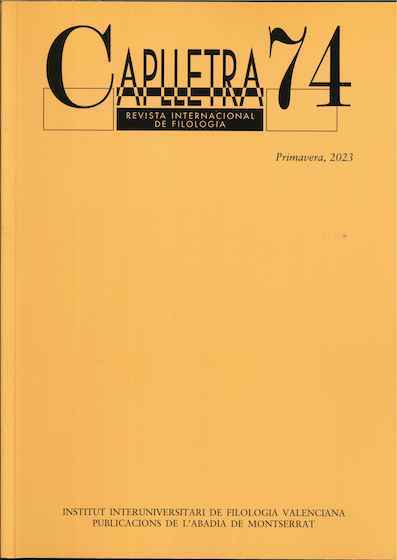«Museu zoològic» and «Bestiari» by Josep Carner: an ecocritical approach
DOI:
https://doi.org/10.7203/caplletra.74.26034Keywords:
ecocriticism, Josep Carner, bestiaries, children’s poetry, nature, sustainability, paratexts Abstract
Abstract
The ecocritical analysis of different editions of Museu zoològic (1963 and 1998) and Bestiari (1964 and 1998), two bestiaries by Josep Carner, is useful to know the message that the text and the illustrations convey. Last decades’ awareness for a more sustainable planet suggests that the images from the most recent editions will help young readers to become aware of the relationship that humans have to establish with the environment. Thus, it will be possible to detect if current children’s poetry communicates a concept of nature respectful to the ecosystem, and also the influence that paratexts can exert on the text.
The tool used in the study is the NatCult matrix, designed by the Nature in Children’s Literature and Culture research group from the Western Norway University of Applied Sciences. This matrix takes into account the anthropocentrism and biocentrism from which children’s literature is conceived, as well as the celebration or problematization of nature that it conveys. The selected corpus focuses on the poems on donkeys and owls because these animals are very represented in Catalan children’s bestiaries and their symbols are easy to identify.
 Downloads
Downloads
Downloads
Published
How to Cite
-
Abstract265
-
PDF (Català)458
Issue
Section
License
Authors submitting work to Caplletra for publication must be the legitimate holder of the usage rights. Legitimacy for the purposes of publishing the work must also include images, tables, diagrams and any other materials that may complement the text, whether they are the author of such material or not.
Copyright: on publishing their work in the journal, the author grants Caplletra. Revista Internacional de Filologia usage rights (reproduction, distribution and public communication) for both the paper printed version and for the electronic version.
All work published in Caplletra is covered by the Creative Commons license type Attribution-NonCommercial-NoDerivatives 4.0 (CC BY-NC-ND 4.0).
RESPONSABILITY
Caplletra. Revista Internacional de Filologia does not necessarily identify with the points of view expressed in the papers it publishes.
Caplletra. Revista Internacional de Filologia accepts no responsibility whatsoever for any eventual infringement of intellectual property rights on the part of authors.






